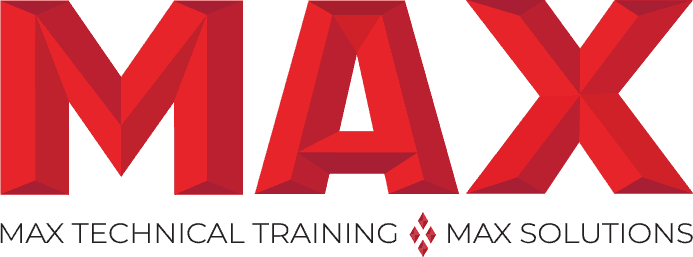04/08/2024
Share This Story, Choose Your Platform!

Why Do Agile Teams Use Iteration Goals?
Agile methodology has revolutionized how teams approach project management, emphasizing adaptability, collaboration, and continuous improvement. Rooted in the Agile Manifesto values of individuals and interactions over processes and tools, working software over comprehensive documentation, customer collaboration over contract negotiation, and responding to change over following a plan, agile is a flexible framework that empowers teams to respond to changing requirements swiftly. It encourages iterative development cycles, allowing incremental improvements and adjustments based on feedback received during each iteration.
The Agile Advantage: A Paradigm Shift in Project Management
In contrast to traditional waterfall methods, which follow a linear sequence of phases, agile embraces uncertainty and welcomes change as a natural part of the development process. By breaking down projects into smaller increments or iterations, agile teams can deliver value more frequently while maintaining high-quality standards.
This approach not only fosters stakeholder engagement but also enables teams to adapt quickly to shifting priorities or market conditions. At the core of agile lies the concept of self-organizing cross-functional teams working collaboratively towards common goals with a shared sense of purpose.
Brief Explanation of Agile Methodology

Agile methodology is a set of principles and practices designed to enhance project management processes by promoting flexibility, transparency, and customer satisfaction through iterative development cycles. At its heart are four core values—individuals and interactions, working software, customer collaboration, and responding to change—that guide decision-making and behavior within agile teams. The iterative nature of agile allows for rapid iterations or sprints where small portions of work are completed within short timeframes called iterations.
The Agile Manifesto: Guiding Principles for Success
Founded on the belief that delivering value early and continuously is paramount in project delivery, the agile methodology prioritizes customer needs above all else. By fostering close collaboration between team members and stakeholders, agile ensures that projects remain aligned with business objectives while remaining open to feedback for continuous improvement. This dynamic approach not only accelerates time-to-market but also enhances overall product quality by encouraging frequent inspection and adaptation throughout the development process.
Facilitates Focus and Direction
One key reason iteration goals are crucial in agile teams is that they serve as guiding beacons, helping team members channel their efforts in a specific direction. By clearly defining what needs to be achieved within each iteration, team members can prioritize tasks effectively and avoid distractions that may derail progress.
This focus ensures that the team’s energy is directed towards tasks that align with the overall project objectives, enhancing productivity and efficiency. Moreover, iteration goals help in setting a clear path for team members to follow.
By breaking down larger project goals into smaller, manageable chunks, each iteration goal acts as a stepping stone toward the ultimate project outcome. This incremental approach not only makes the work more manageable but also provides a sense of accomplishment with each completed iteration, boosting morale and motivation within the team.
Enhances Transparency and Communication

Effective communication is at the core of any successful agile team, and iteration goals play a vital role in promoting transparency and open dialogue among team members. When everyone is aware of the specific goals for each iteration, it fosters a shared understanding of what needs to be accomplished and why.
This clarity reduces misunderstandings or misinterpretations regarding expectations and ensures that everyone is on the same page. Furthermore, having well-defined iteration goals not only benefits internal communication within the team but also enhances interactions with stakeholders.
By providing a clear roadmap outlining what will be achieved in each iteration, stakeholders gain insights into the progress being made and can offer feedback or guidance based on these defined objectives. This transparency builds trust between the team and stakeholders, establishing a collaborative environment conducive to achieving project success.
Benefits of Setting Iteration Goals
Promotes Adaptability and Flexibility
Setting iteration goals in agile teams is crucial for promoting adaptability and flexibility. By defining specific goals for each iteration, teams are better equipped to respond to changing requirements efficiently.
In the dynamic landscape of software development, where client needs and market demands can shift rapidly, having well-defined iteration goals allows teams to pivot quickly without losing sight of their overarching objectives. This adaptability ensures that the team remains nimble and responsive, ready to tackle evolving challenges with agility.
Allows Teams to Respond to Changing Requirements Efficiently
One significant advantage of setting iteration goals is that it enables teams to respond promptly and effectively to changing requirements. In agile development, customer feedback is valued highly, and incorporating this feedback into ongoing iterations is essential for delivering a product that meets users’ needs.
By clearly outlining goals for each iteration, teams can assess new requirements as they emerge and make informed decisions about adjusting their approach. This flexibility not only enhances customer satisfaction by delivering value quickly but also fosters a culture of continuous improvement within the team.
Empowering Team Performance Through Iteration Goals

Increases Motivation and Accountability
One of the significant impacts of setting iteration goals in agile teams is the boost it provides to team members’ motivation and accountability. By defining clear objectives for each iteration, team members are more likely to feel a sense of purpose and direction in their work. Knowing what they are working towards helps individuals stay focused and committed to achieving the set goals.
This clarity eliminates ambiguity and ensures that everyone is on the same page regarding expectations. Furthermore, setting specific iteration goals creates a framework for accountability within the team.
Each member understands their role in contributing towards the shared objective, leading to a heightened sense of responsibility for their individual tasks. When team members know what is expected of them and can track progress towards achieving those goals, it cultivates a culture of ownership where each person takes pride in their work and its impact on the overall project’s success.
Fosters a Culture of Collaboration and Teamwork
Iteration goals not only enhance individual performance but also play a crucial role in fostering collaboration and teamwork within agile teams. By working towards shared objectives, team members are encouraged to collaborate more effectively, leveraging each other’s strengths to overcome challenges and achieve collective success. This collaborative environment promotes communication, idea sharing, and mutual support among team members.
Moreover, iteration goals facilitate collective problem-solving within the team. When faced with obstacles or complexities during an iteration cycle, having well-defined goals encourages team members to come together to brainstorm solutions collaboratively.
This collaborative problem-solving approach not only leads to more innovative solutions but also strengthens relationships among team members as they navigate challenges together. Additionally, promoting knowledge sharing among team members through regular updates on goal progress or sharing best practices enhances learning opportunities within the team ecosystem.
Challenges in Setting Effective Iteration Goals

Setting iteration goals that strike the delicate balance between ambition and realism is a challenging task for agile teams. On one hand, setting overly ambitious goals may lead to overcommitment, causing team members to feel overwhelmed and potentially compromising the quality of work produced. Conversely, aiming too low may result in an underestimation of the team’s capabilities, leading to missed opportunities for growth and innovation. It requires careful consideration and understanding of the team’s capacity and capabilities to set goals that are challenging yet achievable within the constraints of each iteration. To avoid falling into the trap of overcommitment or underestimation, agile teams can leverage past performance data and feedback from retrospectives to inform their goal-setting process. By analyzing historical trends and identifying patterns in team performance, teams can establish more realistic expectations for what can be accomplished in each iteration. This data-driven approach helps mitigate risks associated with setting unrealistic goals while fostering a culture of continuous improvement within the team.
Alignment with Project Objectives: Connecting Iteration Goals to Broader Milestones
Ensuring that iteration goals align with overall project objectives is crucial for maintaining focus and direction within agile teams. Without clear alignment between iteration goals and broader project milestones, teams may find themselves working towards objectives that do not contribute meaningfully to the project’s success. It is essential for teams to continuously evaluate how their iteration goals support larger project initiatives and make adjustments as needed to stay on track.
Connecting iteration goals to broader project milestones provide context and purpose for the work being done by agile teams. By establishing clear links between short-term goals and long-term objectives, team members gain a deeper understanding of how their contributions fit into the larger picture.
This alignment fosters a sense of unity and shared purpose among team members, driving collaboration towards achieving overarching project outcomes effectively. Regularly revisiting and refining these connections ensures that iteration goals remain relevant and impactful throughout the project lifecycle.
Best Practices for Establishing Iteration Goals

Involving the entire team in the goal-setting process
In agile teams, it is crucial to involve the entire team in the process of setting iteration goals. By including all team members in this decision-making process, you foster a sense of ownership and accountability among everyone involved.
This collaborative approach ensures that goals are realistic, achievable, and aligned with the collective vision of the team. Each member brings unique insights and perspectives to the table, which can lead to a more comprehensive and robust set of iteration goals.
Encouraging open communication
Open communication is paramount when establishing iteration goals in agile teams. Creating a safe space for team members to voice their opinions, concerns, and ideas fosters transparency and trust within the team.
Encouraging dialogue helps clarify expectations, resolve any misunderstandings, and ensure that everyone is on the same page regarding the goals set for each iteration. Effective communication also promotes collaboration and teamwork, leading to better problem-solving capabilities and overall performance.
Conclusion: Why Do Agile Teams Use Iteration Goals?
In conclusion, utilizing iteration goals within Agile teams is pivotal for driving success in project management. By breaking down larger objectives into smaller, achievable milestones, Agile empowers teams to adapt swiftly to changing requirements, enhances transparency and communication, and fosters a culture of collaboration and accountability. However, setting effective iteration goals requires a delicate balance between ambition and realism, necessitating the involvement of the entire team and open communication channels.
To delve deeper into Agile methodologies and learn how to effectively implement iteration goals within your team, consider enrolling in Agile training with Max Technical Training. By expanding your knowledge and skills in Agile practices, you can propel your team towards greater efficiency, productivity, and success. Take the next step in your Agile journey today with Max Technical Training.
Read More Articles From MaxTrain Technical Training
Visualising Linear Mixed Effects Model Python Basics
Visualising Linear Mixed Effects Model Python Basics At Max Technical Training, we believe in empowering individuals with the skills they need to excel in today's competitive tech landscape. One crucial skill for data scientists and [...]
Python: How to Solve the Error: Subprocess-Exited-With-Error
Python: How to Solve the Error: Subprocess-Exited-With-Error In the intricate world of software development, encountering errors is par for the course. However, one error that often leaves developers scratching their heads is the error: subprocess-exited-with-error. [...]
Understanding Software Development Roles and Responsibilities
Understanding Software Development Roles and Responsibilities Welcome to Max Technical Training's guide to software development roles! In the ever-evolving world of technology, mastering software development skills opens doors to a variety of exciting careers. At [...]
Scrum: Who Determines How Work Is Performed During the Sprint?
Scrum: Who Determines How Work Is Performed During the Sprint? Welcome to Max Technical Training, the premier destination for professionals eager to excel in Scrum and Agile methodology. If you want to deepen your understanding [...]
What is the Purpose of Iteration Goals?
What is the Purpose of Iteration Goals? Welcome to the world of Agile methodologies, where adaptability, collaboration, and continuous improvement reign supreme. At Max Technical Training, we know that understanding Agile practices is pivotal for [...]
The Skills You Need for Google Security Jobs
The Skills You Need for Google Security Jobs In today's dynamic tech landscape, security skills stand as the cornerstone of digital protection against ever-evolving cyber threats. As cyber-attacks grow in sophistication, the demand for proficient [...]









